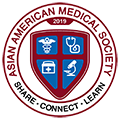The first pillar of cancer treatment can be attributed to surgery. Ancient Greek and Roman physicians recorded surgical procedures for removing tumors. Roman physician Celsus noted, however, “after excision, even when a scar has formed, nonetheless the disease has returned.” The removal of tumors could not cure cancer due to metastasis–when pieces of cancer tissue enter the bloodstream and spread to the whole body.
In the 19th to 20th centuries, the investigation of X-rays brought the advent of radiation therapy as the contemporary cancer treatment. Nevertheless, it was soon discovered that prolonged exposure to radiation also caused cancer. From WWII onwards, the next largest solution to cancer turned to chemotherapy, or, drugs that damage the cell-division process, clearing the rapidly-dividing cancer cells. However, these cancer treatments all face negative side-effects; used with the hope that they kill cancer cells faster than they harm the human patient. These treatments are unstable as well–there is no guarantee the patient will stay in remission.
Recently, in the last couple decades, researchers have looked into immuno-therapeutic tactics to kill cancer. Immunotherapy research has taken a different perspective on cancer treatment: using the body’s natural anti-cancer mechanisms to cure cancer diseases. Specifically, Chimeric Antigen Receptor (CAR) immunotherapy has proven successful against hematopoietic cancers, or, blood cancers. (Think lymphoma and leukemia.)
CAR immunotherapy, like many immunotherapies, force an individual’s immune cells to express a receptor specifically targeted against cancer antigens. CARs are an amalgamation (hence, “chimera”) of engineered proteins–and the gene sequence encoding for it is inserted into immune cells that then proliferate, expressing the CAR. There is an antigen-binding domain that is created specifically to target a tumor antigen, allowing for the versatility of CAR immunotherapies against different kinds of cancer.
The use of T cells to express CARs (thus, CAR-T cells) for treatment is highly specific to the individual. CAR-T immunotherapy contains a high risk of causing graft versus host disease (GVHD) if the host immune system deems the antigens presented on the CAR-T cell to be foreign–even if the CAR-T cells are human leukocyte antigen (HLA) matched. Thus, the procedure of least risk makes the CAR-T immunotherapy an autologous procedure: relying on the patient’s own cells to create CAR-T cells.
To combat the high specificity, and therefore high costs, CAR-Natural Killer (CAR-NK) cells have been proposed and studied as an alternative application of CAR immunotherapy. Natural Killer (NK) cells are considered innate lymphoid cells that are analogous to the function of cytotoxic T-lymphocytes. NK cells are believed to induce tumor cell death as part of their “natural” killing, meaning they do not need nor express antigen-specific receptors (which are expressed in adaptive immunity cells) to be activated to induce cell death. NK cells still express these innate receptors following CAR therapy, allowing the possibility for CAR-NK cells retaining their anti-tumor cytotoxicity in the event of tumor resistance by loss of CAR-targeted antigen.
Most importantly, however, donor NK cells have been shown to have low risk of inducing GVHD in recipients, reducing the risk associated with hematopoietic cancer transfusion therapies. The reduced risk suggests an “over-the-counter” use of CAR-NKs, that, unlike CAR-Ts being a purely autologous procedure, CAR-NKs can be mass produced and used to treat a range of patients.
The use of CAR-NK cells against solid tumors has proved less successful because of the hypoxic and immunosuppressive tumor microenvironment (TME). A hypoxic, or lacking in oxygen, environment is generated by tumor cells, causing cell death and therefore reduced NK cell cytotoxicity against the tumor.
Although CAR-NKs have since proved a good replacement for chemotherapy, outstanding questions remain on the study of CAR-NKs against solid tumors: How can they be better suited in the immunosuppressive and hypoxic environments of the TME? Is the risk of GVHD still just as low for these CAR-NKs? However, with continued research and current success against hematopoietic cancers, CAR-NKs, even CAR immunotherapy as a field, are rising stars in the fight against cancer.
